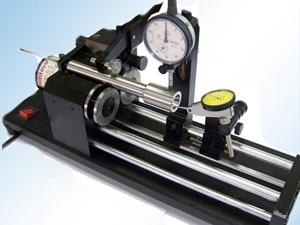The standard of straightness of steel pipes is not required in general pipelines for transporting fluids. The concentricity of the pipe end is required for this kind of pipe to facilitate the welding of pipelines. However, if the steel pipe is used in processing machinery, especially the rubber roller and central axis, they have higher requirements for straightness or curvature, and this is also a very important indicator for them. It involves an issue of processing volume, and the size of the processing volume directly affects the size of the production cost. If it cannot be processed, the steel pipe is directly wasted. Therefore, manufacturers like the production of roller body equipment should pay special attention to the detection of the straightness of the steel pipe when purchasing seamless steel pipes or straight seam steel pipes.
In terms of seamless steel pipes, straight seam steel pipes and forged steel pipes, forged steel pipes have the best straightness, because their outer diameters are produced by processing equipment little by little. There is generally no problem with straightness. Seamless steel pipes have the second best straightness. In the production process of this kind of steel pipe, there is a three-roll straightening machine. There are 6-roll straightening machines, 9-roll straightening machines, 12-roll straightening machines, and computer-controlled multi-function integrated hydraulic straightening machines imported from South Korea for an ultra-high requirement for straightness, which can meet the customer's requirements for straightness. Straight seam steel pipes have the worst straightness. Although the basic process also contains this process, it is made of steel plates or coiled plates. If the internal stress inside the steel cannot be released well, it will also cause deformation of the steel pipe after processing.
Generally speaking, there are two ways of calculating the straightness of steel pipes.
1. Partial curvature of seamless steel pipes or straight seam steel pipes:
Use a ruler with a length of one meter to measure the maximum bending part of the steel pipe, and measure its chord height (mm), which is the partial bending value; its unit is mm/m, and the expression is 2.5mm/m. This method also applies to the curvature of the pipe end.
2. The total curvature degree of the whole length of the steel pipe
Use a thin rope to measure the maximum chord height (mm) at the bending part of the steel pipe, and then convert it into a percentage of the length (in meters), which is the full-length curvature of the steel pipe in the length direction. For example, the length of the steel pipe is 10 meters, and the measured maximum chord height is 30mm; the bending degree of the whole length of the pipe should be: 0.03÷10m×100%=0.3%. For steel pipes with high requirements for straightness, professional testing equipment can be used to test, as shown in the figure below. The straightness of steel pipes can reach 0.1mm/m after being straightened by a precision machine, and is widely used in precision machinery with high requirements for straightness.

Measuring instrument for concentricity